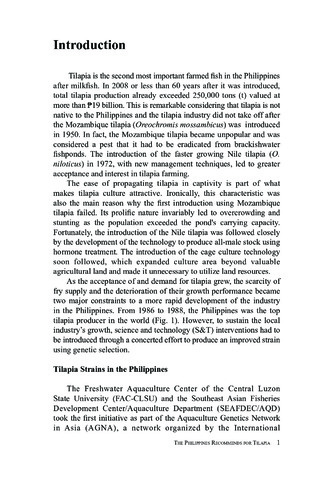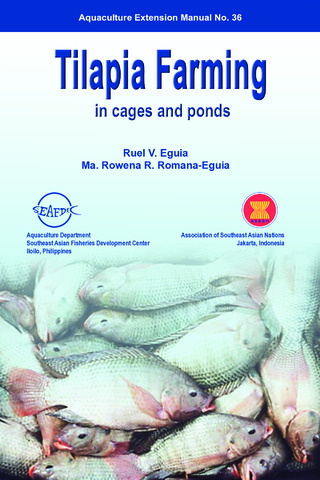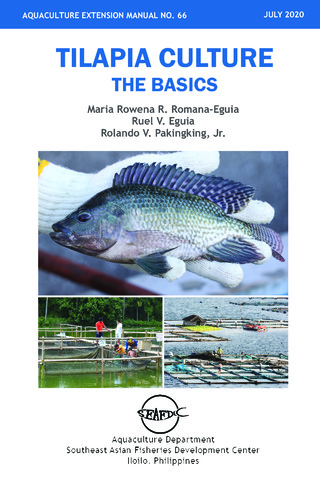| dc.contributor.author | Logronio, Dan Joseph | |
| dc.contributor.author | Somga, Joselito R. | |
| dc.contributor.author | Romana-Eguia, Maria Rowena R. | |
| dc.contributor.author | Somga, Sonia | |
| dc.contributor.author | Catedral, Demy | |
| dc.contributor.author | Coloma, Gonzalo, Jr. | |
| dc.coverage.spatial | Agusan del Sur | en |
| dc.coverage.spatial | Nueva Ecija | en |
| dc.coverage.spatial | Bay, Laguna de | en |
| dc.coverage.spatial | Laguna | en |
| dc.coverage.spatial | Bulacan | en |
| dc.coverage.spatial | Norzagaray | en |
| dc.date.accessioned | 2022-04-27T07:10:41Z | |
| dc.date.available | 2022-04-27T07:10:41Z | |
| dc.date.issued | 2022-03 | |
| dc.identifier.citation | Logronio, D. J. C., Somga, J. R., Romana-Eguia, M. R. R., Somga, S., Catedral, D., & Coloma Jr., G. (2022). Phylogenetic analysis of tilapia lake virus (TiLV) isolates from the Philippines based on partial genome segment 3 sequences. Philippine Agricultural Scientist, 105(1), 100-106. | en |
| dc.identifier.issn | 0031-7454 | |
| dc.identifier.uri | http://hdl.handle.net/10862/6320 | |
| dc.description.abstract | This study aimed to expand current knowledge on TiLV genetic diversity by sequence analysis of a portion of genome segment 3 of TiLV detected from the Philippines. This includes a recently deposited sequence in GenBank (Accession No. LC504279) and six new sequences from cases of infection reported from 2017 to 2020. Phylogenetic analysis of 179 bp fragment of segment 3 showed that the seven TiLV isolates from the Philippines can be divided into three phylogenetic groups. When comparing all sequences, unique nucleotide substitutions and amino acids were noted among these groups. Variation in mortality rates in naturally infected samples was also observed; however, poor environmental conditions during the disease outbreak may also contribute to the mortalities. These suggest the presence of at least three phylogenetic groups of TiLV in the Philippines which has significant implications for the future development of a vaccine, diagnostic kits, and genetic selection programs. | en |
| dc.description.sponsorship | This work was funded by SEAFDEC/AQD. | en |
| dc.language.iso | en | en |
| dc.publisher | College of Agriculture and Food Science, University of the Philippines Los Baños | en |
| dc.subject | phylogenetics | en |
| dc.subject | Tilapia tilapinevirus | en |
| dc.subject | Philippines | en |
| dc.subject | Oreochromis | en |
| dc.title | Phylogenetic analysis of tilapia lake virus (TiLV) isolates from the Philippines based on partial genome segment 3 sequences | en |
| dc.type | Article | en |
| dc.citation.volume | 105 | |
| dc.citation.issue | 1 | |
| dc.citation.spage | 100 | |
| dc.citation.epage | 106 | |
| dc.citation.journalTitle | Philippine Agricultural Scientist | en |
| dc.subject.asfa | phylogeny | en |
| dc.subject.asfa | genomes | en |
| dc.subject.asfa | sequencing | en |
| dc.subject.asfa | viruses | en |
| dc.subject.asfa | diseases | en |
| dc.subject.asfa | genetic variation | en |
| dc.subject.asfa | genetic diversity (as resource) | en |
| dc.subject.scientificName | Oreochromis | en |
| dc.subject.scientificName | Sarotherodon galilaeus | en |
| dc.subject.scientificName | Coptodon zillii | en |
| dc.subject.scientificName | Oreochromis aureus | en |
| local.subject | phylogenetics | en |
| local.subject | segment 3 | en |
| local.subject | Philippines | en |
| local.subject | Tilapia Lake Virus | |



